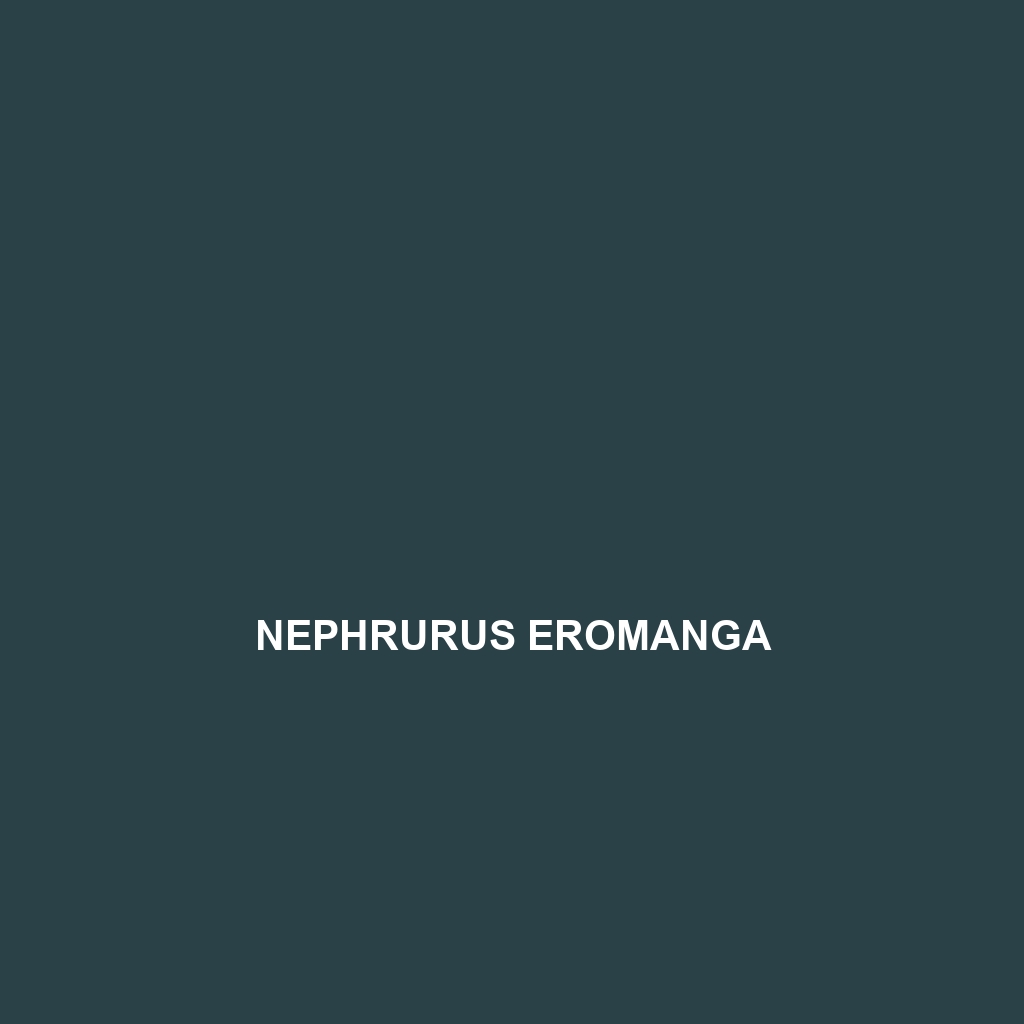Common Name
Nephrurus eromanga
Scientific Name
Nephrurus eromanga
Habitat
Nephrurus eromanga, commonly known as the Eromanga Spiny-Tailed Gecko, primarily inhabits the arid and semi-arid regions of Australia. Its habitat ranges from sand dunes to grasslands, specifically thriving in areas characterized by red sandy soils and low-lying vegetation. These geckos are also found in savannas with sparse tree cover and temperate forests where they can easily blend into the environment. The climate corresponds typically to hot, dry conditions, with periodic rainfall crucial for supporting the flora that sustains the local fauna.
Physical Characteristics
Nephrurus eromanga exhibits distinct physical traits that enable it to adapt to its environment. The gecko can grow to a length of approximately 15 to 20 centimeters. Its body is somewhat flattened, helping it conceal itself among the sandy substrates of its habitat. The coloration is typically a blend of sandy browns and yellows, providing excellent camouflage. One of its unique features is its spiny tail, which is not only a distinguishing characteristic from other gecko species but also serves as a defense mechanism against predators. The gecko’s large eyes, equipped for night vision, indicate its nocturnal behavior.
Behavior
Nephrurus eromanga exhibits a range of interesting behaviors. As a predominantly nocturnal species, it is more active during the night when it forages for food. Social interactions are minimal, as these geckos tend to be solitary except during mating seasons. Interestingly, they have a unique habit of burying themselves in sand during the day to avoid extreme heat. Their mating rituals often involve complex displays of movement and communication, which can include head bobbing and tail waving, enabling them to attract potential mates.
Diet
The dietary habits of Nephrurus eromanga classify it as an insectivore. It primarily feeds on a variety of insects, including crickets, beetles, and other arthropods that it can find in its natural habitat. Their foraging strategy involves actively hunting and ambushing prey rather than scavenging. Some reports suggest a varied diet that can include small fruits and plant matter, indicating some degree of flexibility in their feeding patterns, though primarily they depend on animal protein.
Reproduction
The reproductive cycle of Nephrurus eromanga typically occurs in the warmer months, particularly during spring and early summer. Mating often involves a courtship display where males fight for the attention of multiple females. The gestation period lasts about 30 days, after which the female lays two to three eggs in a burrow or a nest covered with sand for protection. Remarkably, parental care is minimal, with offspring being independent from birth. Hatchlings emerge fully formed and ready to hunt for themselves, showcasing the species’ unique reproductive strategy.
Conservation Status
As of the latest assessments, Nephrurus eromanga is classified as least concern according to the International Union for Conservation of Nature (IUCN), which indicates that the population remains stable and does not face immediate threats. However, habitat loss due to land development and changes in land use practices pose potential risks. Conservation efforts are focused on habitat preservation and raising public awareness about this unique species to ensure that their natural environment is protected.
Interesting Facts
Nephrurus eromanga has some fascinating adaptations that distinguish it from other reptiles. One particular adaptation is its ability to drop its tail in a defensive maneuver, allowing it to escape from predators. The tail can regenerate over time, although the new tail may differ in appearance from the original. Additionally, these geckos are known for their resilience to heat, capable of surviving in harsher climates where other species may falter. Their friendly demeanor when handled can often dispel misconceptions about reptiles being aggressive.
Role in Ecosystem
Nephrurus eromanga plays a significant role in its ecosystem as both predator and prey. As insectivores, these geckos help control insect populations, contributing to the health of their surroundings. They serve as a food source for larger predators, ensuring a balanced food web within their habitat. Their burrowing habits also influence soil aeration and structure, promoting healthy plant growth in the region and engaging in the nutrient cycle, which is essential for maintaining the ecosystem’s health and diversity.
